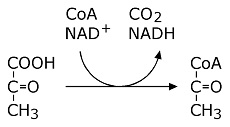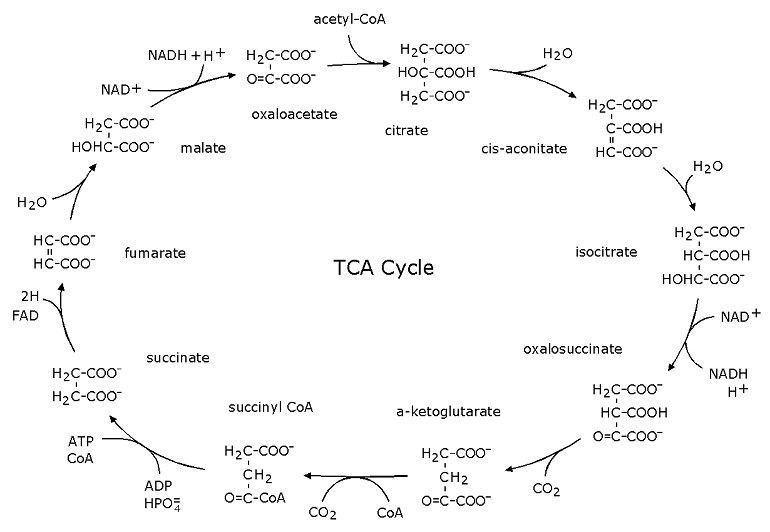|
TCA Cycle
Tricarboxylic Acid Cycle Citric Acid Cycle Krebs Cycle The TCA cycle converts carbohydrate to carbon dioxide and sends the energy to the respiration system. The energy is carried by NADH. The carbohydrate for this has already been broken down to two carbon atoms through glycolysis, which starts with glucose, which has six carbon atoms. Tricarboxylic acid means there are three carboxylic acids on the molecule, which is citric acid. Carboxylic acid is -COOH. Often it is shown with a negative sign in place of the hydrogen. This means the acid is neutralized, and the hydrogen is off combining with something else creating a salt. The Net Effect: The significance of the TCA cycle is that it takes the left-over carbon from glycolysis and breaks it down in such a way as to yield a large amount of useable energy. The energy is first transferred to NAD+ through a highly charged hydrogen atom, and the result is shown as NADH + H+. This molecule carries the energy to the respiratory chain system, where three ATP molecules are energized from each one. All of this occurs in small cells within the cell called the mitochondria. Bacteria do not have mitochondria, and still they sometimes have TCA cycles.The Process: The left-over carbon from glycolysis is usually pyruvic acid. It has three carbons. Before it enters the TCA cycle, it is reduced to two carbons as acetate attached to coenzyme-A (noted as CoA). The combination is called acetyl-CoA. Fat also forms acetyl-CoA, when it is yielding energy in the same way. Pyruvic acid is converted into acetyl CoA: The TCA Cycle:
At the top of the cycle, acetyl-CoA feeds in and forms citrate, a tricarboxylic acid. At three locations, NAD+ picks up high energy hydrogen, which it carries to the respiratory chain system. At two places, CO2 is liberated. So the net is two carbons in and two carbons out, as acetate is converted to CO2.
|


